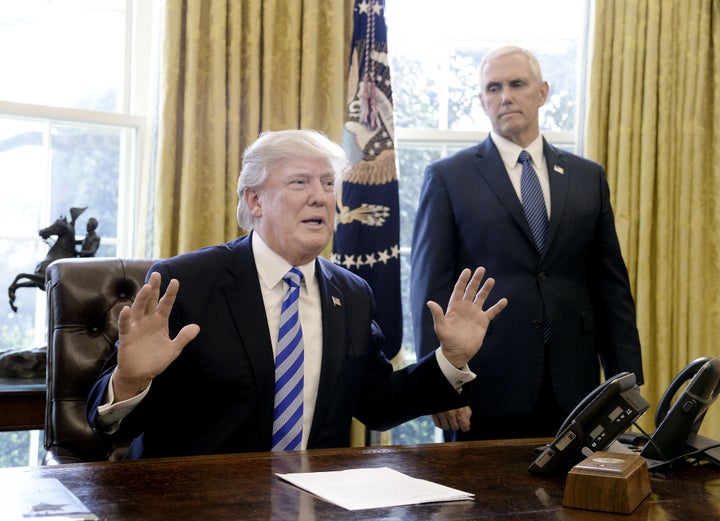
How is it that the 37 most rightwing members of the House, the so-called Freedom Caucus, have disabled the Republican majority?
The explanation is the relatively recent tradition that Republicans never make bipartisan agreements with Democrats, except in the rare cases when they can peel off a few conservative Democrats to totally capitulate to Republican terms. If Republicans could bring themselves to work with Democrats — the norm for most of American history — the outsized influence of the most extreme Republicans would collapse.
The Republican posture of ultra-partisanship, which has now backfired, is something recent in American legislative politics. It dates only to the presidency of George W. Bush, and more recently to the Republican wall-to-wall blockage of Democratic initiatives under President Obama.
Before that, President Bill Clinton, who had a Republican majority in Congress for six of his eight years, frequently reached across the aisle to win majorities for policies, some of them liberal and some conservative.
This posture, commended by the strategist Dick Morris, was called Triangulation. It drove liberals crazy, but enabled Clinton to govern. (Clinton was also willing to play partisan hardball when then Speaker Newt Gingrich shut down the government—and had to back down.)
Under Clinton, liberal legislation like the Family and Medical Leave Act and the hike in the minimum wage were passed with mostly Democratic votes, but also with support of some Republicans. Conversely, more conservative bills, like the NAFTA deal in 1993 and the enactment of a draconian welfare reform (TANF) in 1996, passed with mostly Republican votes and a minority of Democrats.
Before Clinton, Republican President George H.W. Bush governed the same fashion. He reached across the aisle to get Republican and Democratic support for the Americans with Disabilities Act and the 1990 Clean Air Amendments. He enlisted Democrats when his fellow Republicans balked at a tax increase.
Several bills in the eras of the first president Bush and Bill Clinton bore the names of Ted Kennedy and Republican co-sponsors Nancy Kassebaum or Orrin Hatch.
Early in the Bush II Administration, W worked with Democrats over the objection of some Republicans to win support for an expansion in federal aid to education in exchange for federal standards, and to add a Medicare drug benefit.
And then partisanship gradually hardened. Under the so-called Hastert Rule, Republicans avoided bipartisan coalitions. It was first propounded in November 2004 by the then House Speaker, Dennis Hastert, as a way to maintain tighter party discipline. The Hastert rule bound Republicans to vote with a majority of the Republican caucus position.
Hastert left Congress in 2007, after Republicans lost control of the House. Hastert was subsequently found guilty of ethics violations and went to prison in a sex scandal, after it was revealed that he had been paying hush money to former students who he had abused as a wresting coach.
But when Republicans took back the Congress after 2010, they imposed a more extreme version of the same idea. They simply stopped working across the aisle.
This strategy worked well enough in their cynical opposition to anything Barack Obama imposed, but it has now given a de facto veto power to their own most extremist members — the Freedom Caucus. Basically, the caucus has inverted the Hastert Rule, and feels free to oppose the GOP’s rightwing policies if the are not rightwing enough. This has made it all but impossible for the Republican majority to govern.
There is a very simple cure, one that would consign the Freedom Caucus the political oblivion that it so richly deserves — Trump and the Republicans should rediscover the benefits of bipartisanship.
After all, Trump did not campaign as a conservative but as a populist. He is not much of a partisan Republican and is cordially detested by most Republicans, who tolerate him only to the extent that they can use him.
If any president should be practicing “triangulation,” it is Donald Trump. Where is the ur-opportunist Dick Morris now that we need him? (Morris fell from grace in 1996 when he was caught with a hooker.) He and Trump were surely destined for each other.
If Trump and relatively sane Republicans could get together with Democrats to improve the aspects of the Affordable Care Act that do in fact need fixing, like rising premiums, they could tell the Tea Party Republicans in the Freedom Caucus to take a hike. Likewise on infrastructure and trade measures.
That maneuver and repositioning would show true artistry of the deal. With upwards of a hundred Democrats supporting bipartisan measures, the 37 whack jobs in the Freedom Caucus, who surely have no loyalty to Trump, would cease to have influence.
Are some House Republicans and Trump himself ready to acknowledge that reality and this option? It would allow for a restart of his presidency, more consistent with the promises he made in the campaign.
Or do they just share a hatred of Democrats so profound that they will continue to allow the Freedom Caucus to wreck the Republican Party and the Trump presidency alike?
Robert Kuttner is co-editor of The American Prospect and professor at Brandeis University’s Heller School. His latest book is Debtors’ Prison: The Politics of Austerity Versus Possibility. http://www.amazon.com/Debtors-Prison-Politics-Austerity-Possibility/dp/0307959805
Like Robert Kuttner on Facebook: http://facebook.com/RobertKuttner
Follow Robert Kuttner on Twitter: www.twitter.com/rkuttner
